"The future of commerce isn't about selling products, but selling time. The winners will deliver value before it's requested." - Futurist Jim Carroll
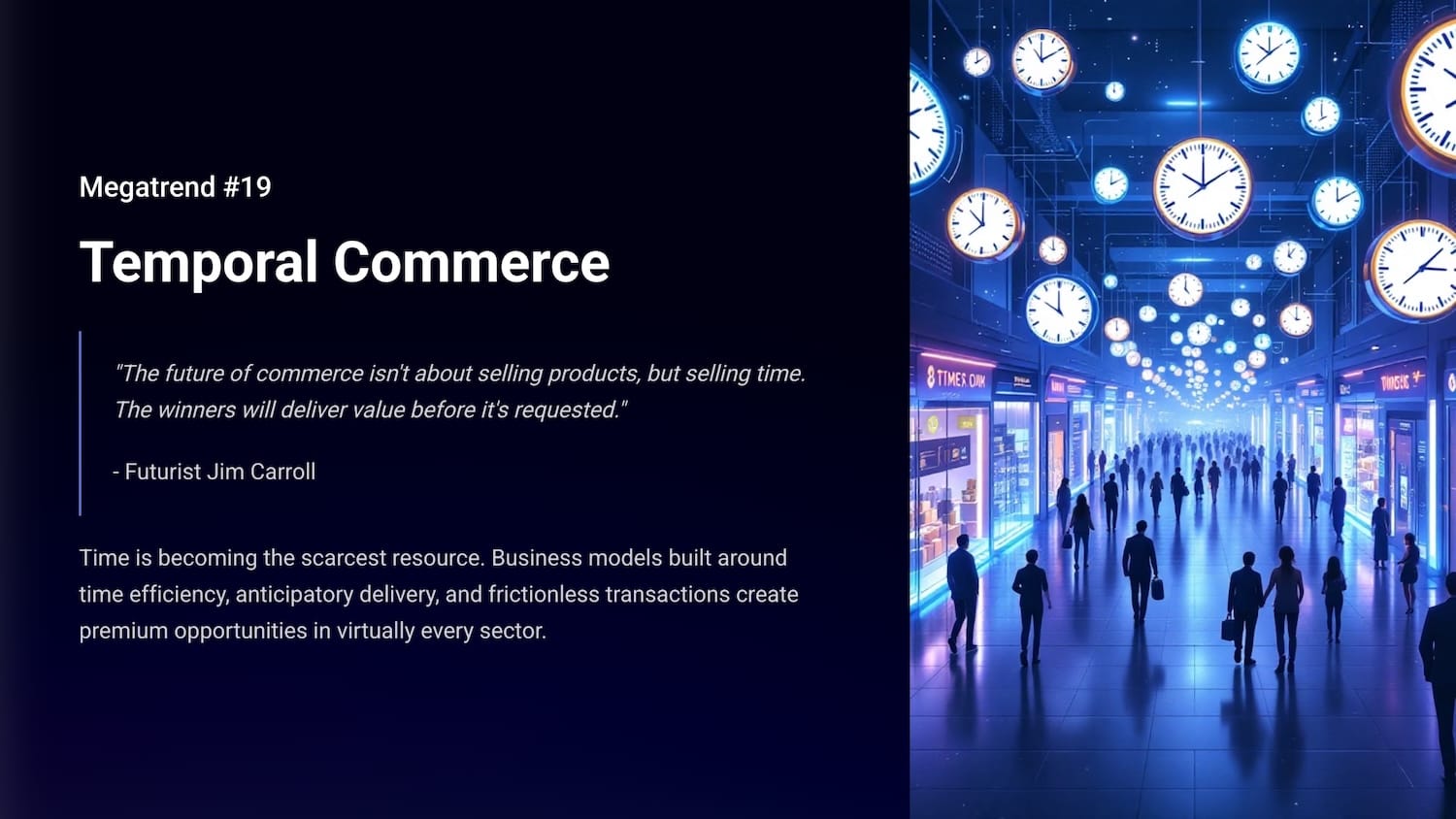
(Futurist Jim Carroll is writing a series on 30 Megatrends, which he first outlined in his book Dancing in the Rain: How Bold Leaders Grow Stronger in Stormy Times. The trends were shared in the book as a way of demonstrating that, despite any period of economic volatility, there is always long-term opportunity to be found. The book is now in print - learn more at dancing.jimcarroll.com)
Time is becoming the scarcest resource. Business models built around time efficiency, anticipatory delivery, and frictionless transactions create premium opportunities in virtually every sector.
Let's call it The Time Economy: Navigating the Disruptive Rise of Temporal Commerce. The full PDF report is right here.
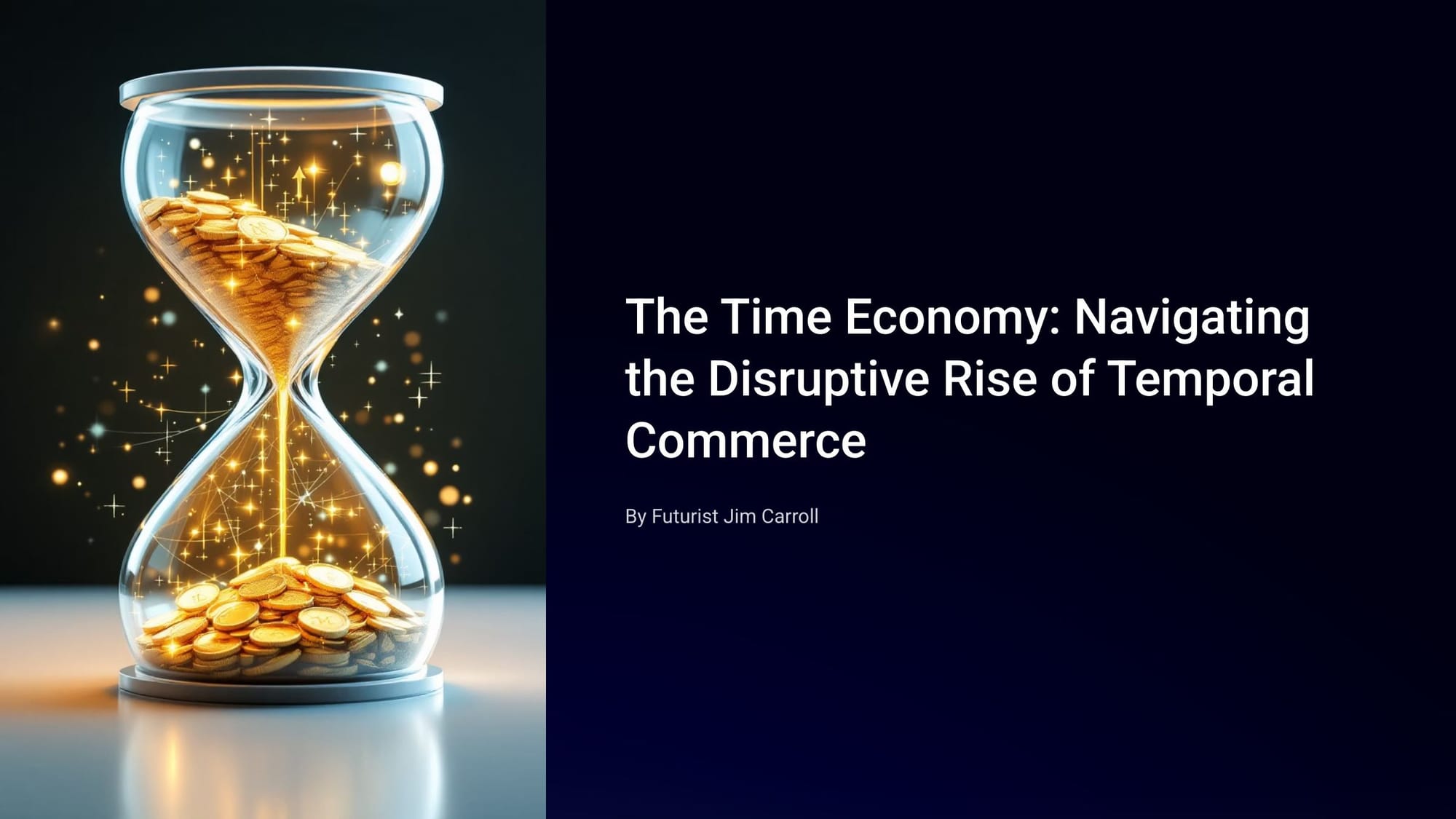
Consider this reality: In the 21st-century economy, a profound shift is underway. For decades, capital and then information were the most prized and contested resources. Today, a new asset has emerged as the ultimate measure of value: time.
The finite, non-renewable, and constantly depleting nature of time for every individual and organization is elevating it to the status of the scarcest resource. And from this fundamental scarcity, a new economic paradigm is materializing: temporal commerce (or time-based commerce).
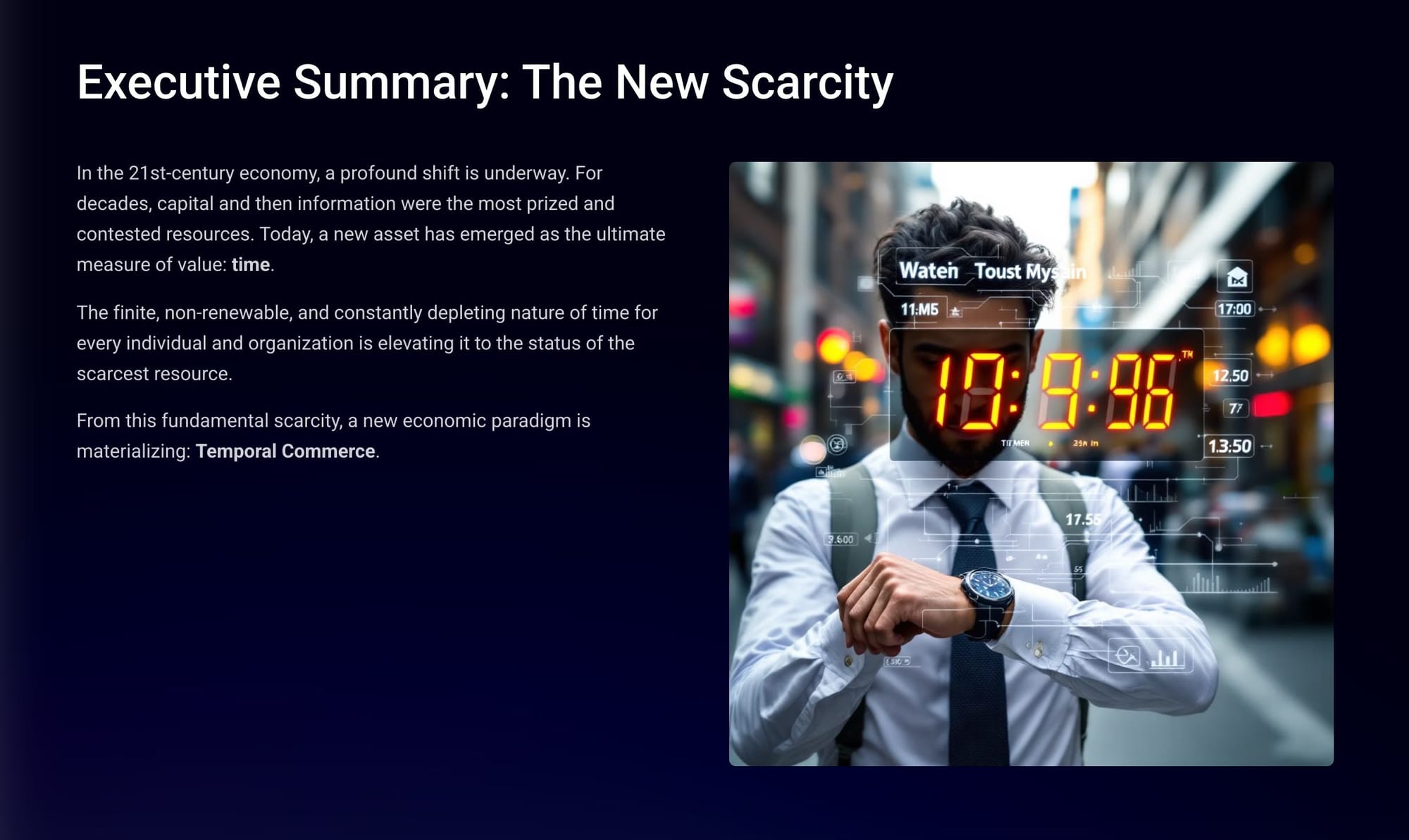
What's behind it? There are several key ideas at work:
- Frictionless Ecosystems. The elimination of transactional pauses through technologies like seamless digital payments, biometric authentication, and integrated ‘super-apps’ drastically reduces the cognitive and temporal cost of purchasing.
- Anticipatory Logistics. The shift from a reactive to a proactive supply chain, using predictive analytics and AI to forecast demand and pre-position goods closer to the consumer, collapsing delivery times from days to minutes.
- Autonomous Execution. The deployment of robotic systems—including aerial drones and ground vehicles—to execute the final leg of the supply chain with a speed and efficiency unattainable by human labor.
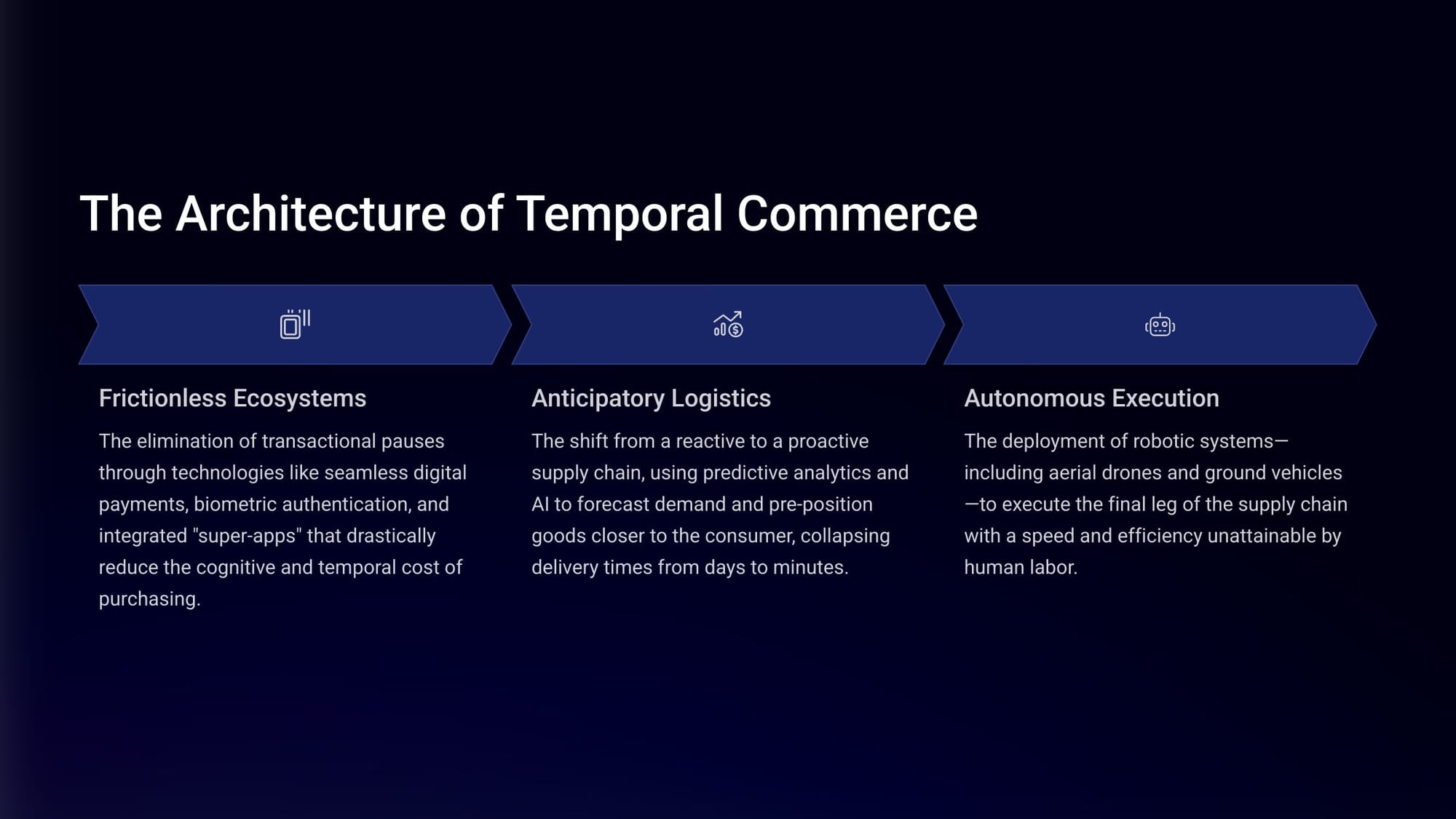
Pillar 1, "frictionless ecosystems," eliminates the 'pause' that occurs with most transactions. It focuses on removing every possible delay, hesitation, or point of friction from the act of transacting. The goal is to reduce the cognitive load and time cost so drastically that the purchase becomes a seamless, background process. What's behind this are these technologies:
- Contactless payments (NFC)
- Digital wallets
- Biometric authentication
- Secure data handling (ie, tokenization)
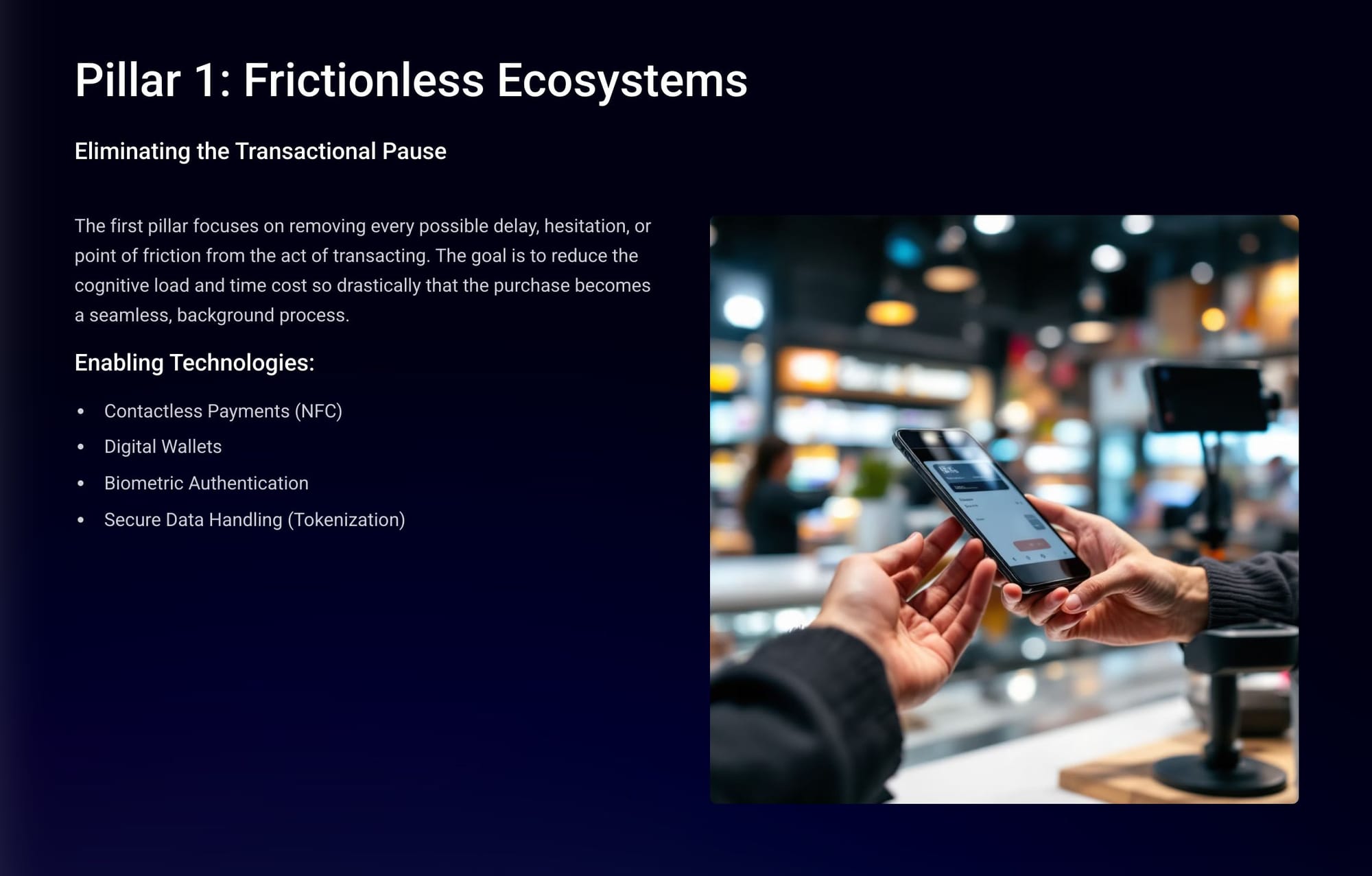
The second pillar is "anticipatory logistics" - the idea of fulfilling needs before intent.
This moves commerce from a reactive to a proactive stance. Instead of waiting for a customer to place an order, anticipatory logistics uses data to predict future needs and pre-position products closer to the point of expected demand. The technologies here are predictive analytics & AI, machine learning, and a lot of real-time data processing.
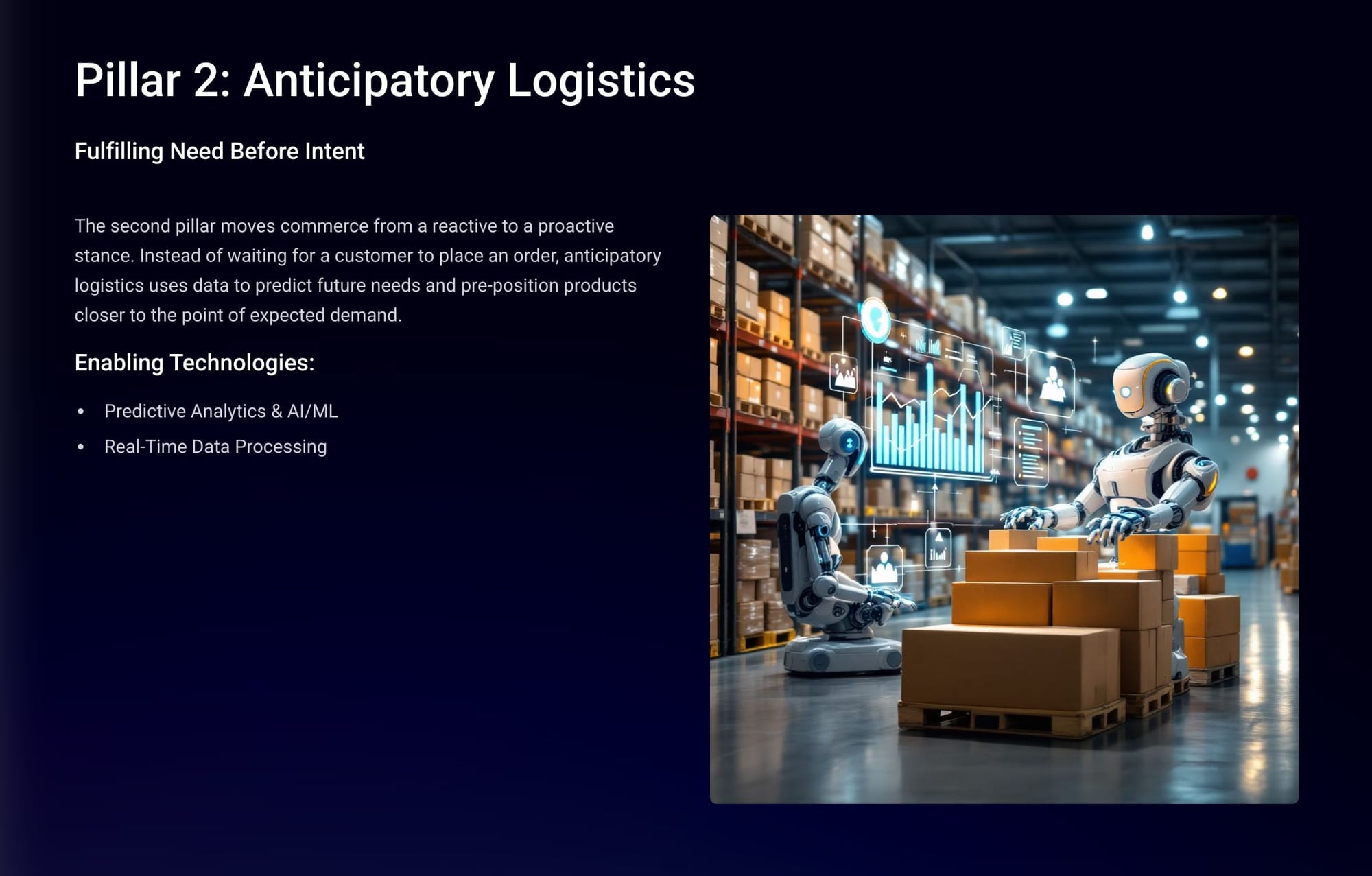
The third pillar is 'autonomous execution,' which involves a lot of last-mile delivery technology (i.e., robots and drones) - the part where autonomous systems take over the final, most complex, and historically time-consuming part of the delivery chain. Again, there's a lot of emerging tech:
- Aerial delivery drones
- Ground delivery vehicles (sidewalk robots, autonomous vans)
- 5G communication, LiDAR, radar, cameras, AI processors
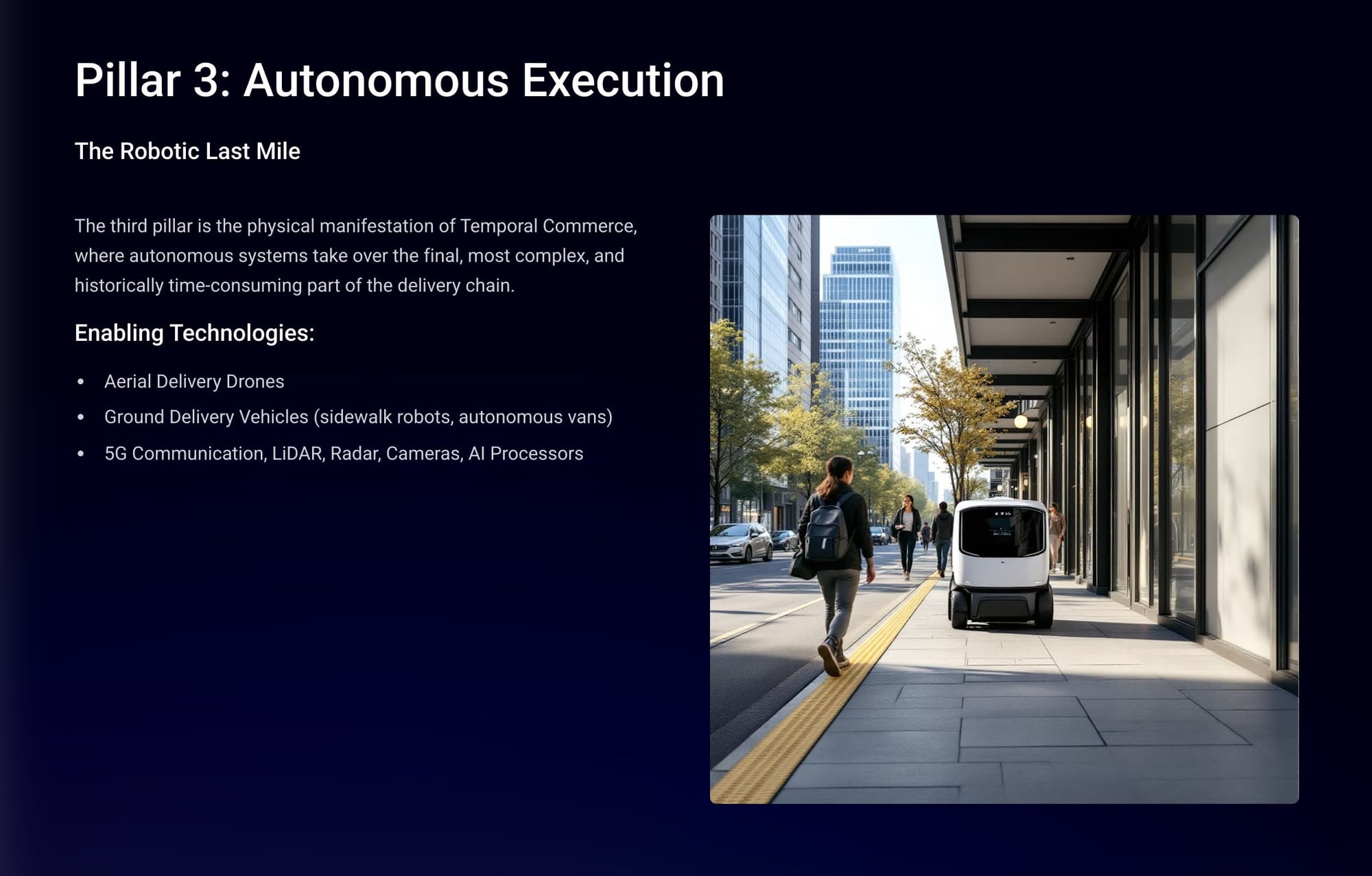
All of these ideas have been coming together for some time, but it's where this voyage takes us that things get interesting. Out at the frontiers of the trend, there are a lot of new edge-case scenarios that move us beyond optimizing existing consumer behaviors to creating entirely new commercial paradigms.
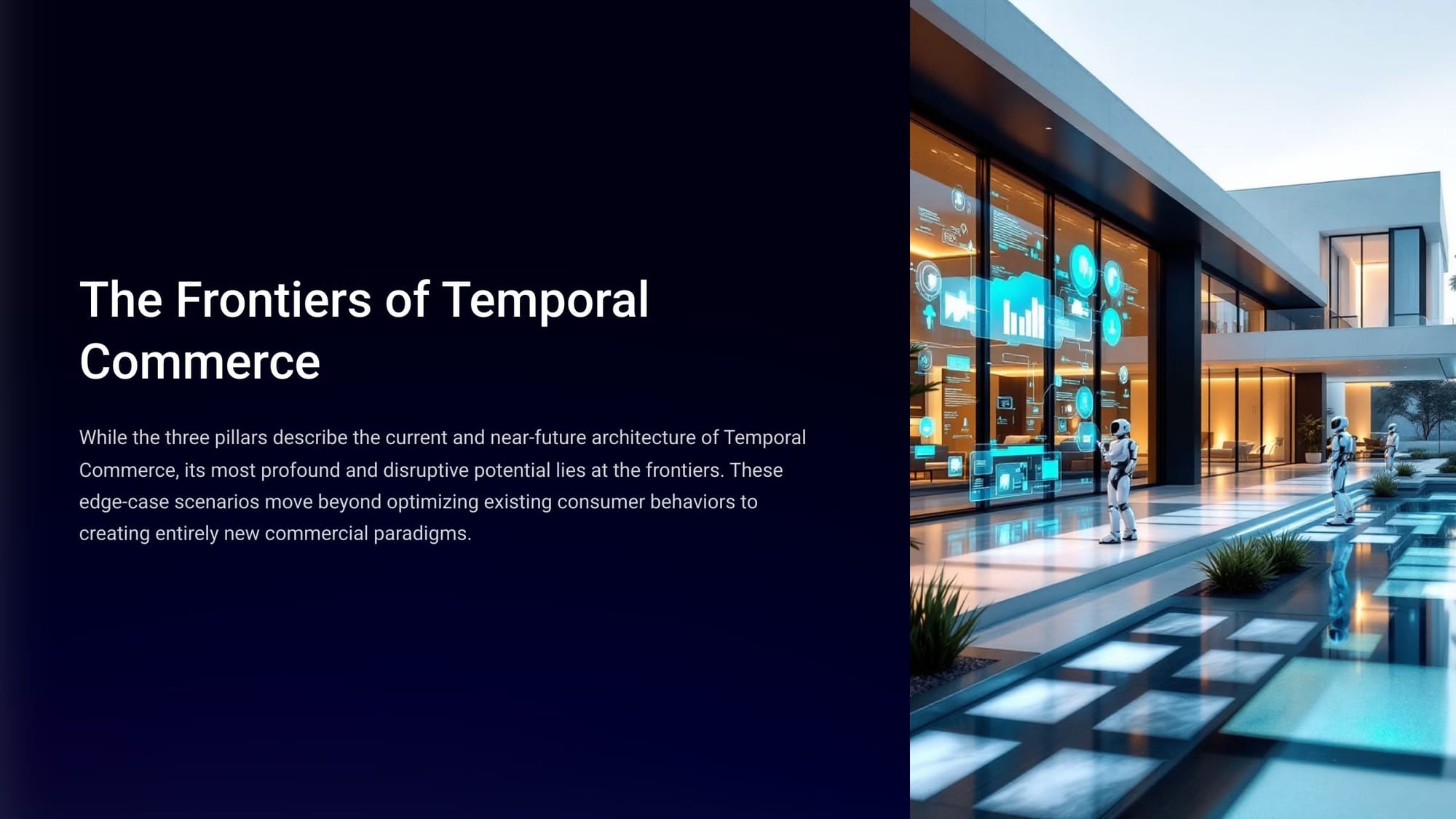
For example, we talk of "bio-Integrated commerce" where the body is the marketplace.
This represents the ultimate form of anticipatory commerce, shifting from predicting conscious desires to responding directly to subconscious biological needs in real-time. Think of anticipatory systems that order a medication simply by understanding the signals your body is sending, with the enabling technologies here being medical wearables and health platforms. This becomes a subscription-based service where a user’s health intelligence platform is integrated with their retail and grocery accounts.
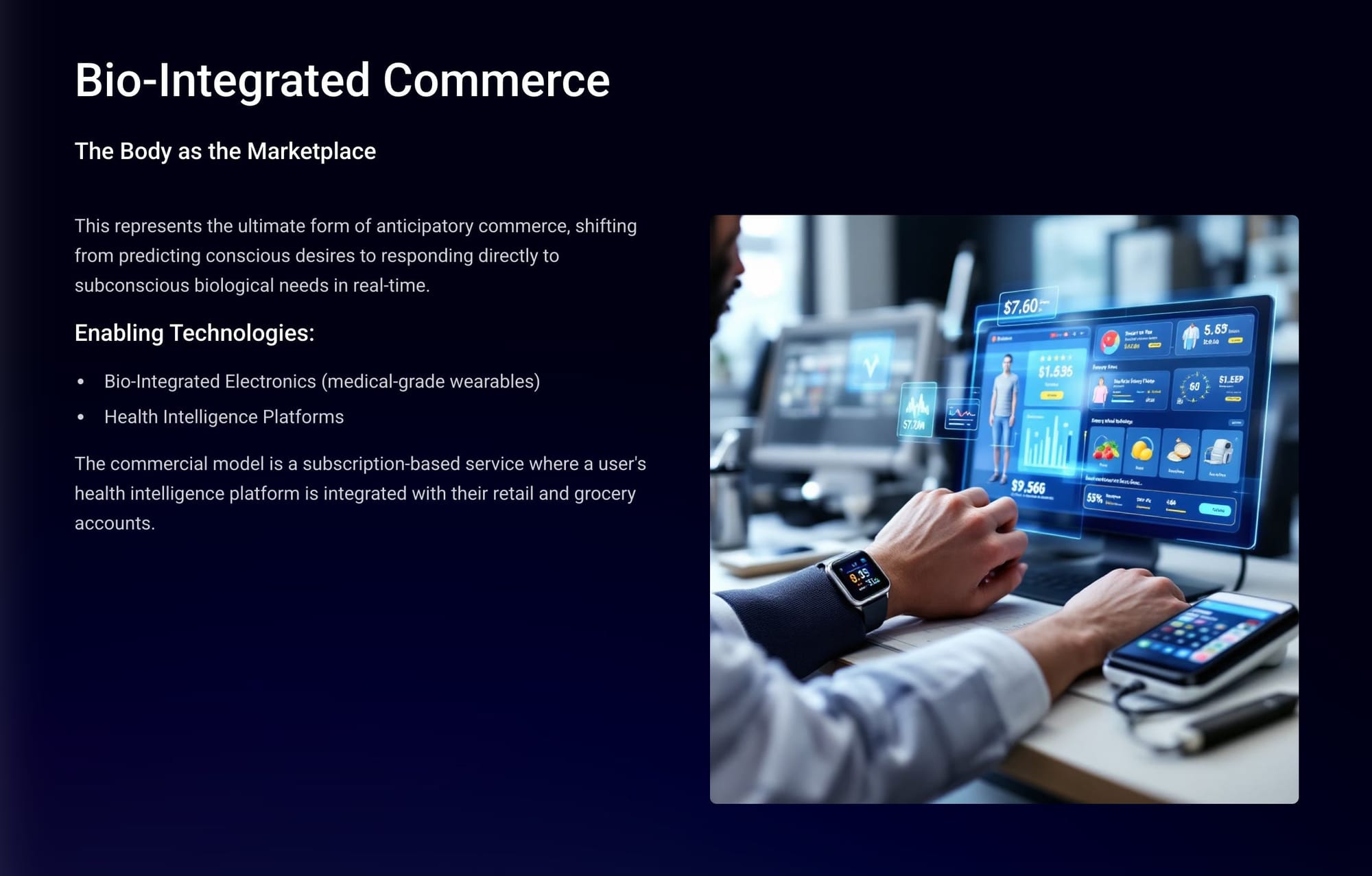
Or consider the "pre-emptive asset replacement" idea, of what we might call the 'Fix-It-Before-It-Breaks' Economy. This scenario extends the anticipatory model from disposable consumer goods to high-value, durable assets like home appliances, vehicles, and industrial machinery. The enabling technologies here are:
- Pervasive IoT and smart sensors
- Predictive maintenance AI
Think of something breaking down and phoning in the repair request without your involvement. This marks a fundamental shift from a transactional model (selling a product) to a subscription or “as-a-service” model.
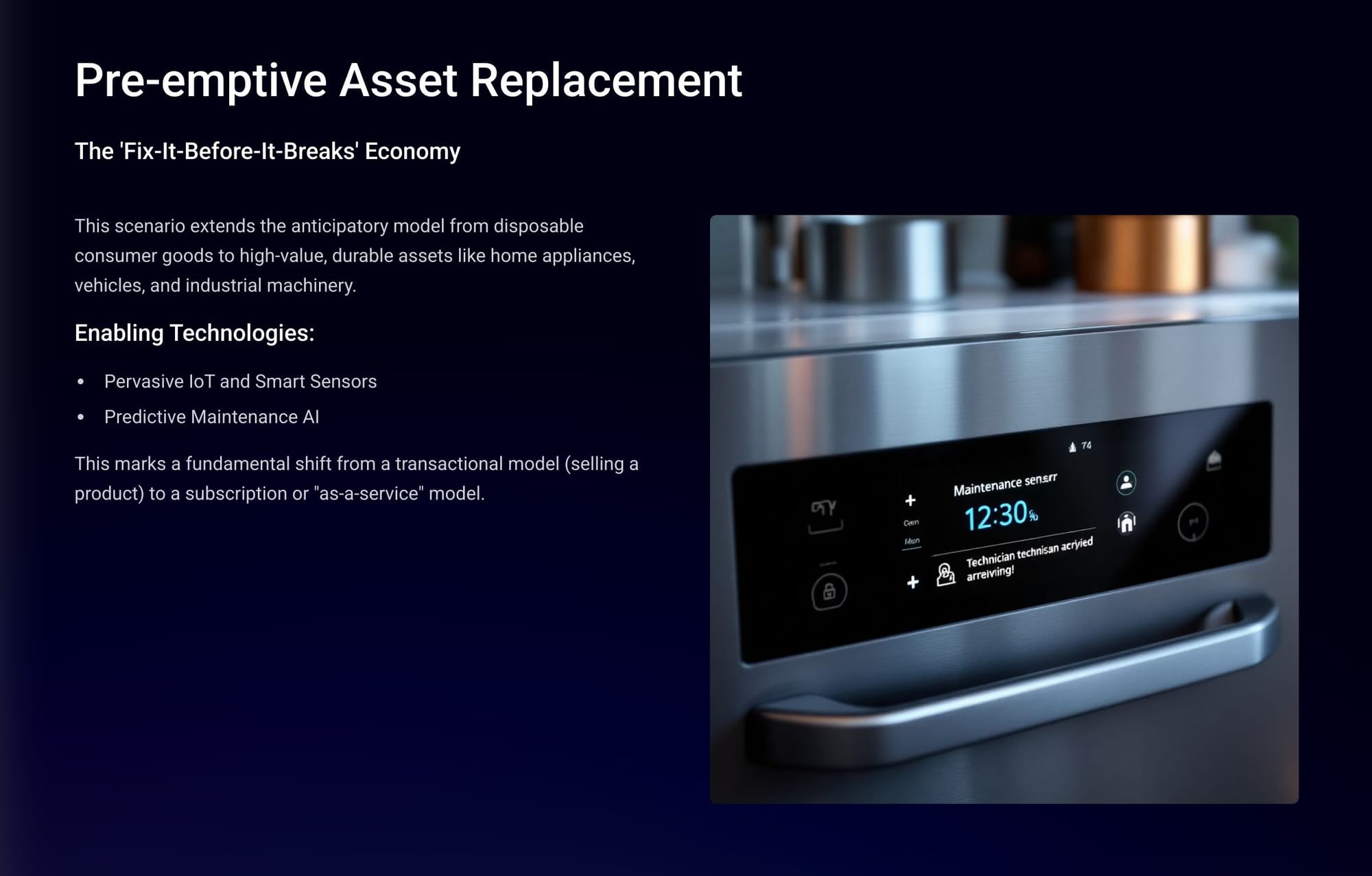
Then there is "autonomous household management" or what some refer to as "The Home as a Self-Provisioning Entity." This is the ultimate convergence of all temporal commerce pillars into a single, integrated system that manages the entire household ecosystem. This is the part where your fridge starts doing the grocery order based on what it sees as missing items. Crazy? Maybe not.
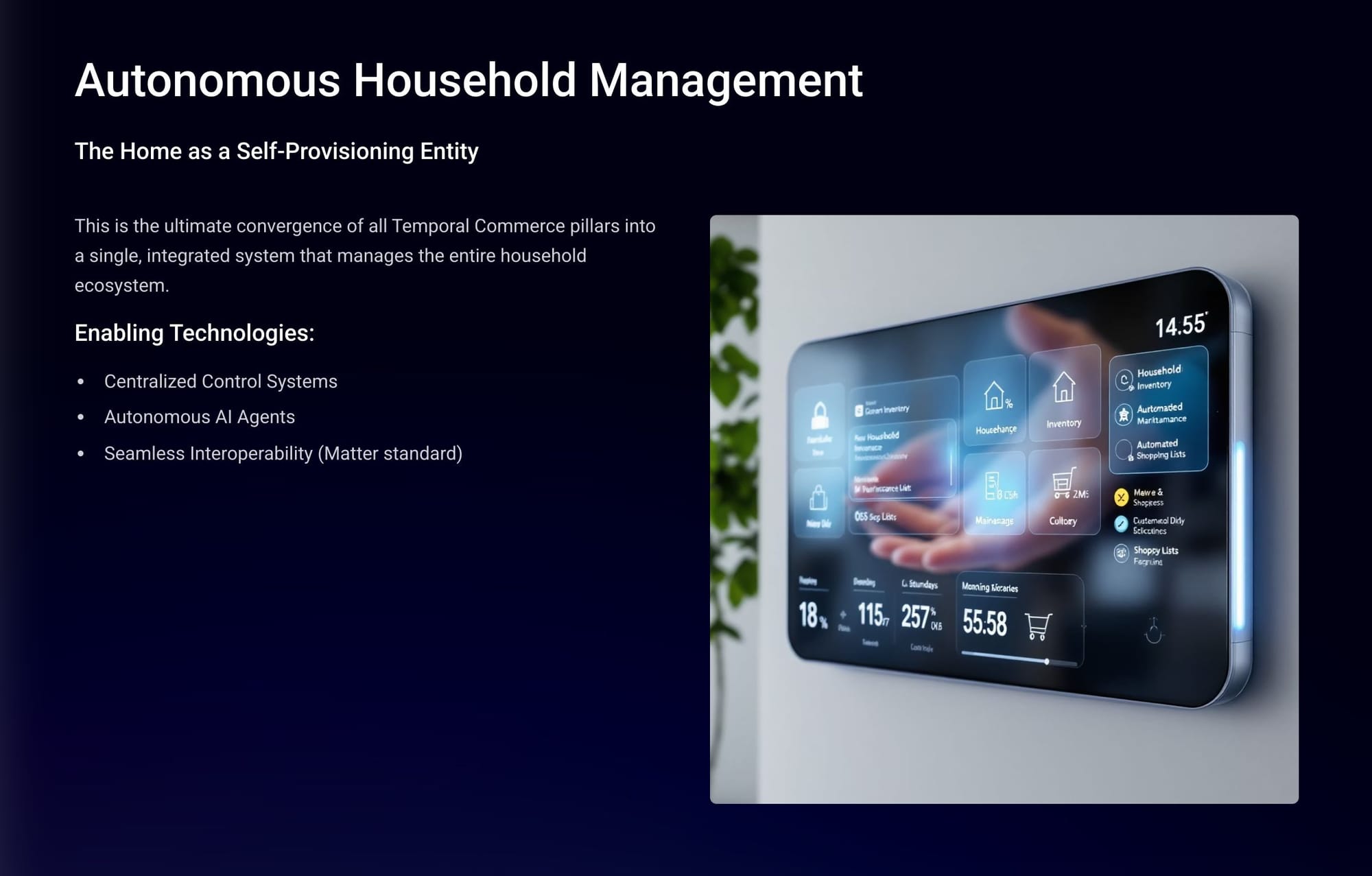
This would include:
- Automated replenishment: Monitoring inventory levels in smart pantries and refrigerators and automatically re-ordering groceries and supplies.
- Service scheduling: Integrating with pre-emptive replacement services to schedule and grant access for maintenance technicians.
- Resource optimization: Managing energy consumption by optimizing HVAC and lighting based on occupancy patterns, weather forecasts, and dynamic electricity pricing.
- Budget management: Executing all transactions within pre-set budgetary constraints defined by the occupants.
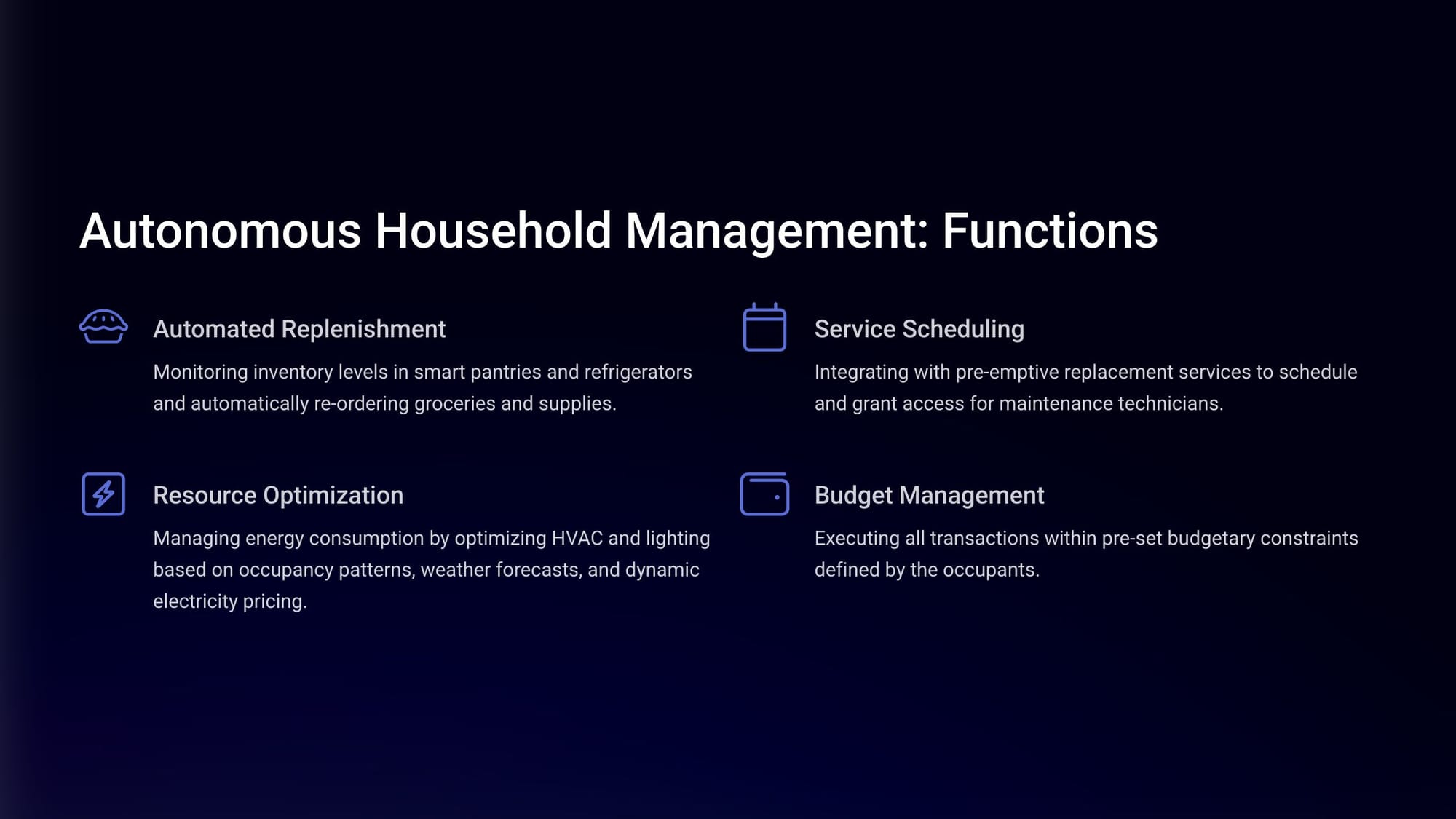
All of this involves a change in the decision-making process involved in the transactions that we make:
- Traditional commerce: Consumer makes all purchasing decisions consciously
- Frictionless commerce: Consumer decides with reduced friction
- Anticipatory commerce: System predicts and suggests decisions
- Autonomous commerce: The System decides based on consumer preferences
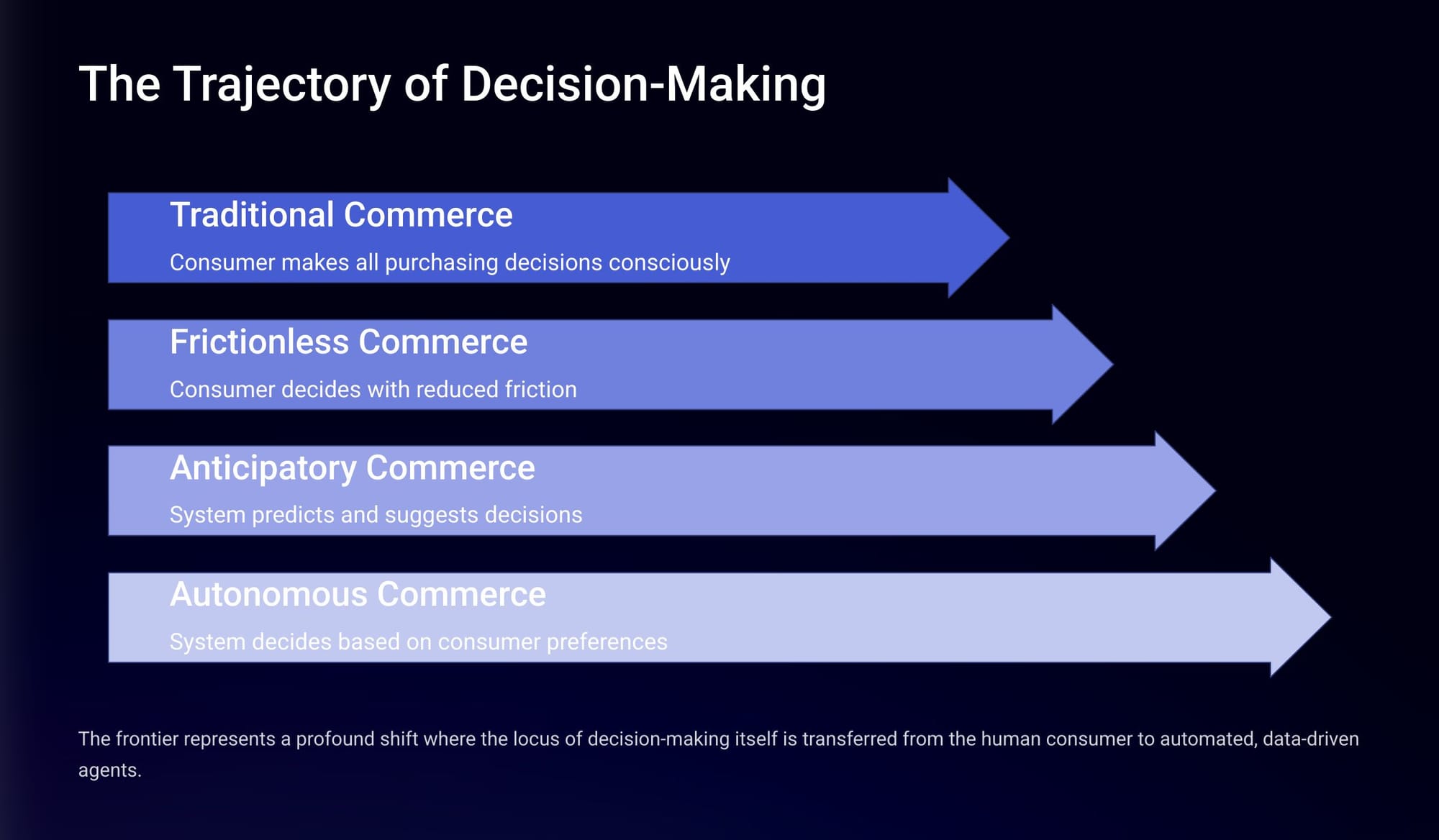
The frontier represents a profound shift where the locus of decision-making itself is transferred from the human consumer to automated, data-driven agents.
So what's the potential timeline? This is one possible scenario:
Phase 1: Emerging (2025-2028)
- NFC, digital wallets, and QR codes become ubiquitous
- Sidewalk robots handle hyper-local deliveries on campuses
- AI reduces retail forecasting errors by 20-50%
- Drones are becoming standard for medical deliveries in several African nations
Phase 2: Scaling (2029-2032)
- Biometric payments become common in major retail chains
- Robotaxis are operational in 40-80 cities globally
- AI in the retail market surpasses USD 53.74 billion
- First commercial bio-integrated commerce services launch
Phase 3: Mainstream (2033-2035)
- "Invisible" payments are common in urban centers
- Autonomous trucks account for up to 30% of new truck sales in the US
- Global IoT market reaches ~USD 1.5 trillion
- Second-generation autonomous household management systems are available
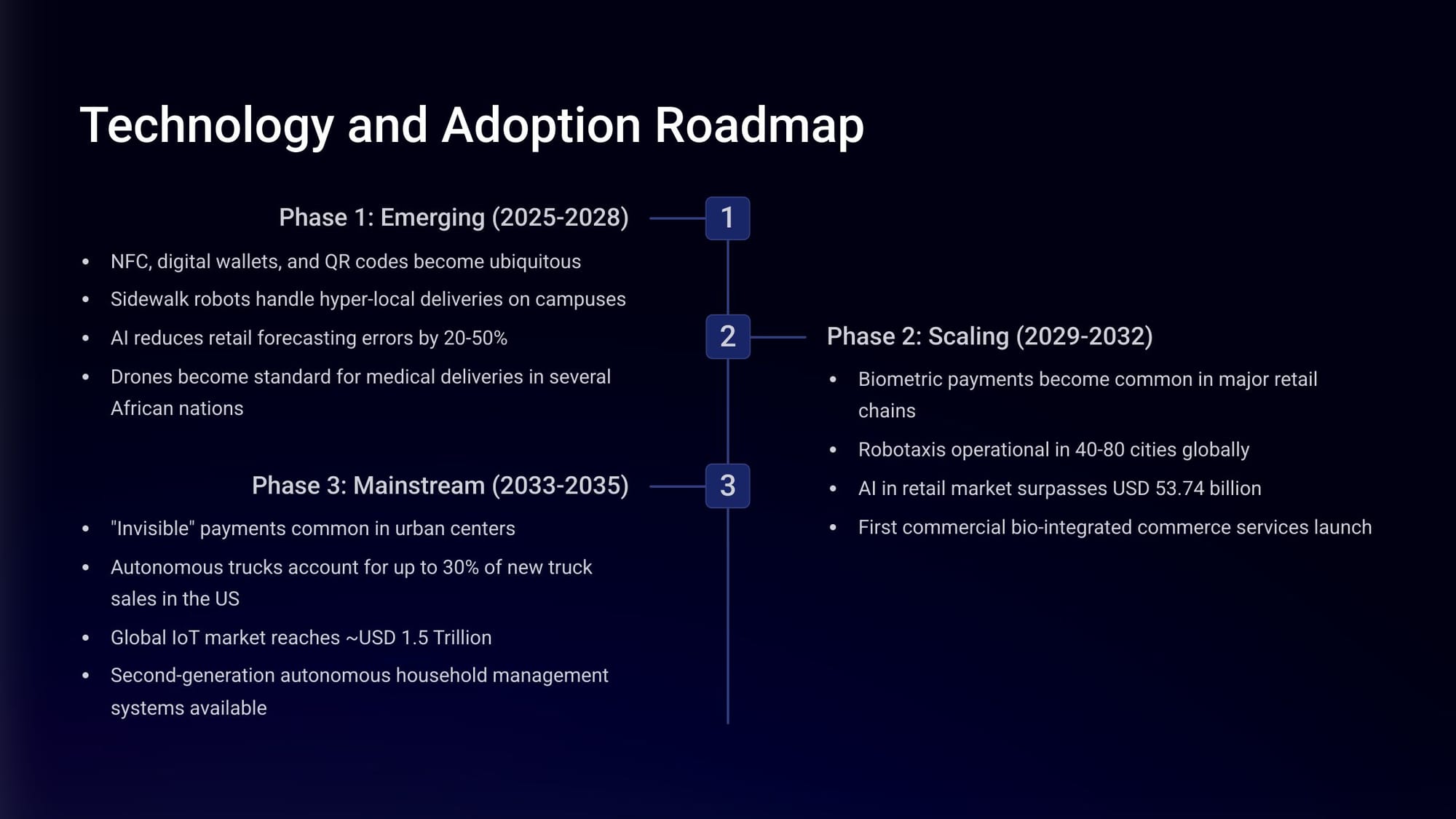
This trend often seems crazy to most people, but keep in mind that Amazon, as expected, is at the forefront of these trends and innovates at a furious pace. We already have much of the technology, have become used to the idea of a change in how we shop - and are now seeing the arrival of a lot of bold ideas.
In 1997, Futurist Jim Carroll released a book called Selling Online: How to be a Successful E-commerce Merchant. Many in the press and business community suggested at the time that the whole idea of online shopping was doomed to ultimately fail.

